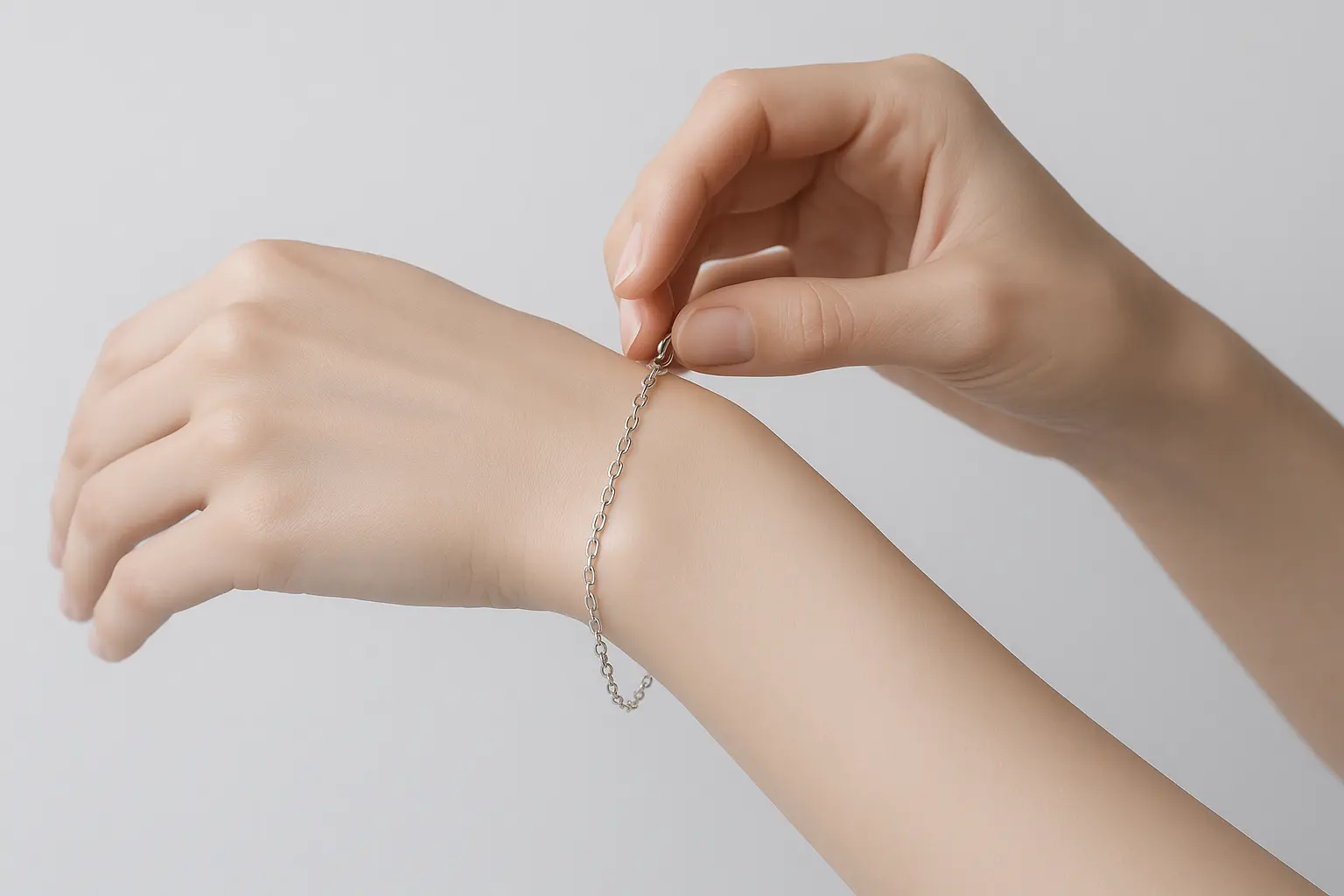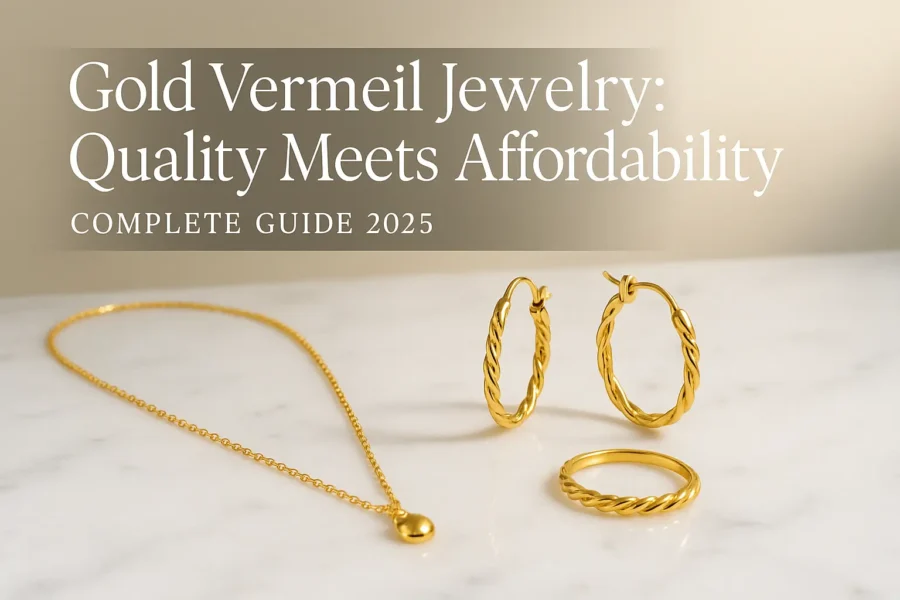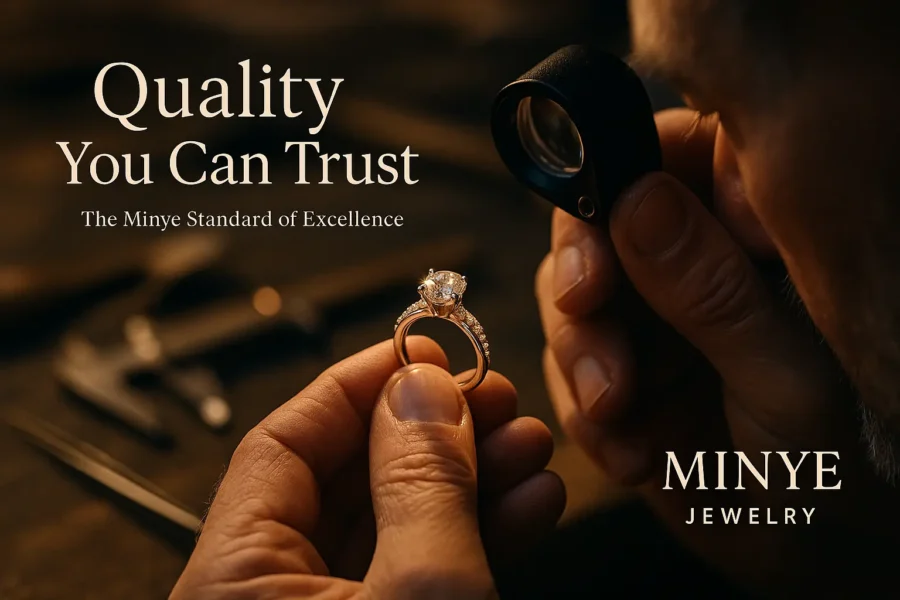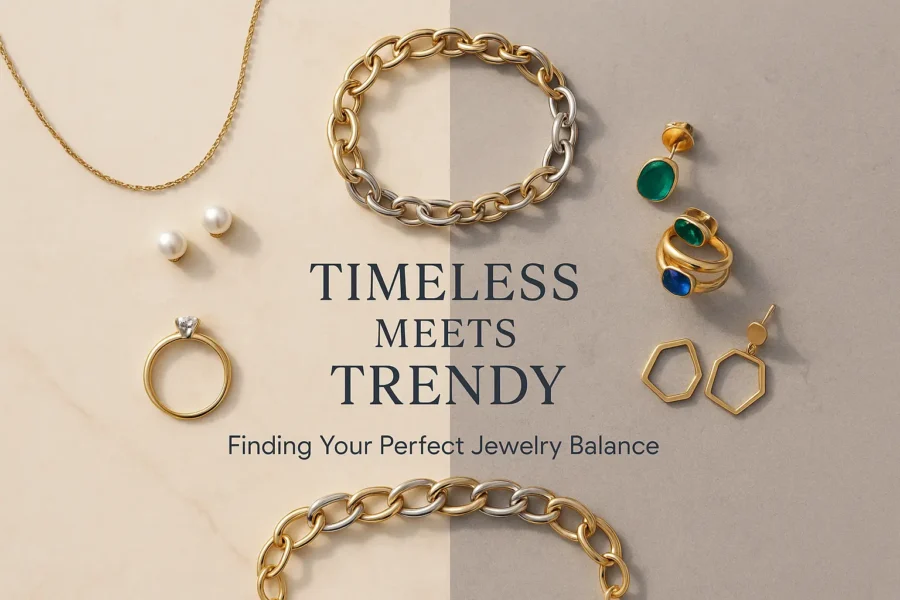If you’ve ever experienced itching, redness, or irritation after wearing jewelry, you’re not alone. Millions of people worldwide deal with jewelry allergies, making the question “Is sterling silver hypoallergenic?” more relevant than ever. Understanding the relationship between sterling silver and skin sensitivity can help you make informed decisions about your jewelry choices.
Hypoallergenic jewelry refers to pieces that are less likely to cause allergic reactions. While no material is 100% guaranteed to be allergy-free for everyone, some metals are significantly safer for sensitive skin than others. This guide will help you understand whether sterling silver fits your needs and how to choose the safest options for your skin.
Understanding Sterling Silver Composition
Sterling silver is an alloy containing 92.5% pure silver and 7.5% other metals. This composition is necessary because pure silver is too soft for practical jewelry use. The additional metals provide strength and durability, making sterling silver ideal for everyday wear.
The most common alloy metals include copper, which gives sterling silver its characteristic strength and slight warm tone. Some manufacturers also use zinc, nickel, or other metals in small quantities. The specific combination of these alloy metals significantly impacts whether the final product will be suitable for sensitive skin.
This standardized composition is why you’ll see “925” stamped on quality sterling silver pieces, indicating the 92.5% silver content. However, the remaining 7.5% can vary between manufacturers, which is where potential allergens may be introduced.

Sterling Silver and Allergic Reactions
The primary concern with sterling silver allergies stems from nickel content. Nickel is one of the most common jewelry allergens, affecting approximately 10-15% of the population. When sterling silver contains nickel in its alloy composition, it can trigger reactions in sensitive individuals.
Copper sensitivity is less common but still possible. Some people may experience reactions to copper, especially if they have particularly sensitive skin or if the jewelry becomes tarnished and creates copper compounds on the skin surface.
Individual skin sensitivity varies greatly. Factors like skin pH, moisture levels, and personal immune responses all influence how your skin reacts to different metals. What causes a reaction in one person may be perfectly fine for another.
Common symptoms of jewelry allergies include redness, itching, swelling, or a rash where the jewelry touches your skin. These reactions typically appear within hours or days of wearing the problematic piece.

Factors That Influence Hypoallergenic Properties
The quality of sterling silver manufacturing plays a crucial role in its hypoallergenic properties. Reputable manufacturers carefully select alloy metals and maintain strict quality control to minimize allergens. Higher-grade sterling silver typically uses copper as the primary alloy metal, avoiding nickel altogether.
Plating and finishing processes can also impact skin compatibility. Some sterling silver pieces receive rhodium plating or other protective coatings that create a barrier between your skin and the base metal. These treatments can make jewelry more suitable for sensitive skin.
Proper jewelry care and maintenance significantly affect how your skin reacts to sterling silver. Tarnished or dirty jewelry is more likely to cause irritation because oxidation and buildup can create harsh compounds that irritate skin.
Your skin’s natural pH and moisture levels also influence reactions. People with more acidic skin or those who perspire heavily may experience more reactions because these conditions can accelerate metal oxidation and increase allergen exposure.
How to Choose Hypoallergenic Sterling Silver
When selecting sterling silver for sensitive skin, look for pieces specifically labeled as nickel-free. Many quality manufacturers now produce sterling silver alloys that use only copper and other non-allergenic metals.
Quality hallmarks and stamps provide important information about the metal’s composition. Look for “925” stamps and additional certifications that indicate nickel-free composition. Reputable manufacturers often provide detailed information about their alloy compositions.
Choose established manufacturers with good reputations for quality and customer service. Companies that specialize in hypoallergenic jewelry, like Minye Jewelry, often have extensive experience working with sensitive skin requirements and can provide detailed information about their manufacturing processes.
While price shouldn’t be the only consideration, extremely cheap sterling silver pieces may use lower-quality alloys or manufacturing processes that increase the likelihood of allergic reactions. Investing in quality pieces from reputable sources often provides better long-term value and skin compatibility.
Alternatives for Highly Sensitive Skin
Fine silver, which is 99.9% pure silver, offers the highest level of hypoallergenic properties among silver options. However, fine silver is softer and may not be suitable for all jewelry types, particularly pieces that receive heavy wear.
Platinum represents the gold standard for hypoallergenic jewelry. It’s naturally pure and rarely causes allergic reactions. While more expensive than sterling silver, platinum offers excellent durability and skin compatibility.
High-karat gold (18k or higher) is another excellent option for sensitive skin. The higher the karat, the more pure gold content and the less likely it is to contain problematic alloys.
Surgical steel and titanium provide affordable alternatives that are highly biocompatible. These materials are commonly used in medical implants and are excellent choices for people with severe metal sensitivities.
Some manufacturers offer hypoallergenic coating options that can make sterling silver more suitable for sensitive skin. These coatings create a protective barrier while maintaining the appearance of sterling silver.
Care Tips for Sensitive Skin Wearers
Proper cleaning is essential for maintaining hypoallergenic properties. Clean your sterling silver regularly with appropriate silver cleaners or gentle soap and water. Avoid harsh chemicals that might damage protective coatings or create irritating residues.
Store sterling silver pieces in dry, clean environments. Use anti-tarnish strips or cloths to minimize oxidation, which can increase the likelihood of skin reactions. Keep pieces separated to prevent scratching and damage.
Remove jewelry before activities that cause heavy perspiration, swimming, or exposure to chemicals. Moisture and chemicals can accelerate tarnishing and increase the risk of allergic reactions.
Pay attention to early warning signs of allergic reactions. If you notice any redness, itching, or irritation, remove the jewelry immediately and clean the affected skin area. Continuing to wear problematic pieces can worsen reactions and increase sensitivity over time.

Making the Right Choice for Your Skin
Sterling silver can be hypoallergenic when manufactured with appropriate alloy compositions and proper quality control. The key is choosing pieces from reputable manufacturers who prioritize skin safety and use nickel-free formulations.
For most people with mild to moderate skin sensitivity, high-quality sterling silver from experienced manufacturers provides an excellent balance of beauty, durability, and skin compatibility. At Minye Jewelry, we specialize in creating nickel-free sterling silver pieces specifically designed for sensitive skin, combining traditional craftsmanship with modern hypoallergenic standards.
If you have severe metal allergies or have experienced reactions to sterling silver in the past, consider alternatives like fine silver, platinum, or surgical steel. There’s no shame in choosing materials that work best for your individual needs.
Remember that jewelry should enhance your life, not cause discomfort. Taking the time to choose appropriate materials and care for your pieces properly will ensure you can enjoy beautiful jewelry without compromising your skin health.
Frequently Asked Questions
Is all sterling silver hypoallergenic?
Not all sterling silver is hypoallergenic. The hypoallergenic properties depend on the specific alloy metals used in the remaining 7.5% of the composition. Nickel-free sterling silver is generally safe for most people with sensitive skin.
How can I test if I’m allergic to sterling silver?
The safest way is to wear a small piece for a short period and monitor your skin’s reaction. You can also consult with a dermatologist about patch testing for specific metal allergies.
Can sterling silver allergies develop over time?
Yes, metal sensitivities can develop with repeated exposure. This is why it’s important to choose quality pieces and maintain them properly to minimize allergen exposure.
What should I do if I have a reaction?
Remove the jewelry immediately, clean the affected area with mild soap and water, and avoid wearing that piece until the reaction subsides. If reactions are severe or persistent, consult a healthcare professional.
Choosing the right jewelry for sensitive skin doesn’t have to be complicated. With proper knowledge and attention to quality, you can enjoy beautiful sterling silver pieces that complement your style without compromising your comfort.






